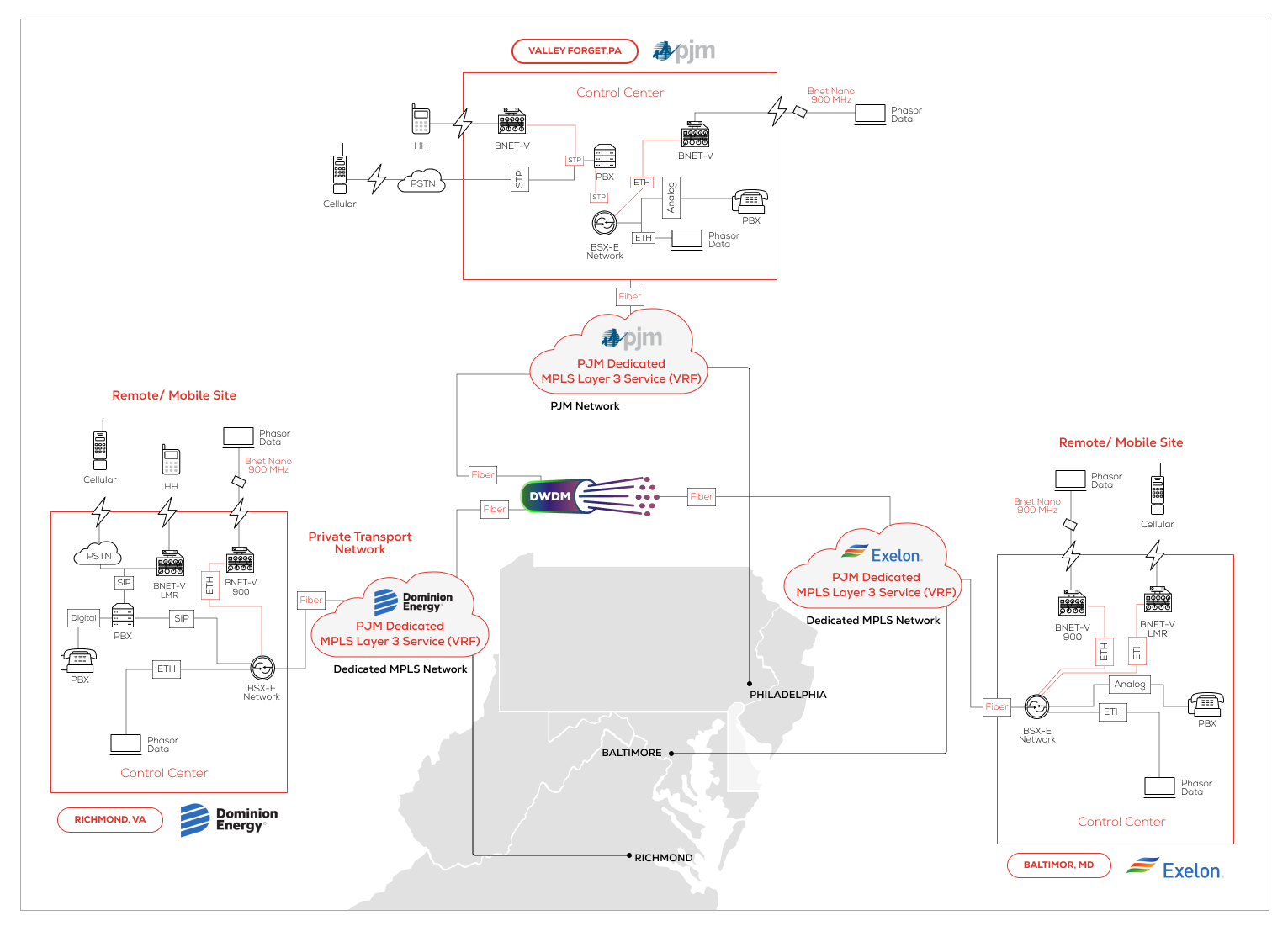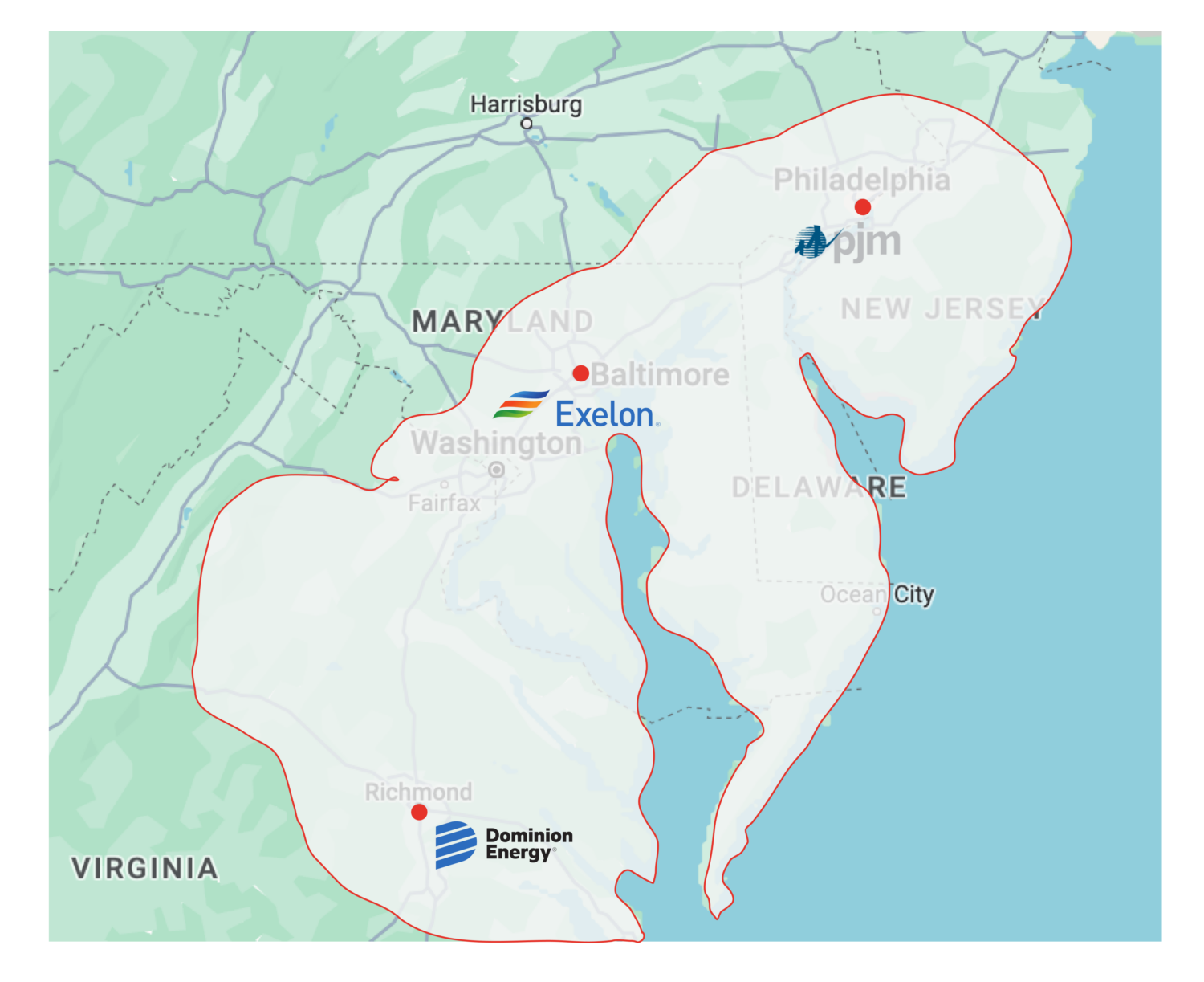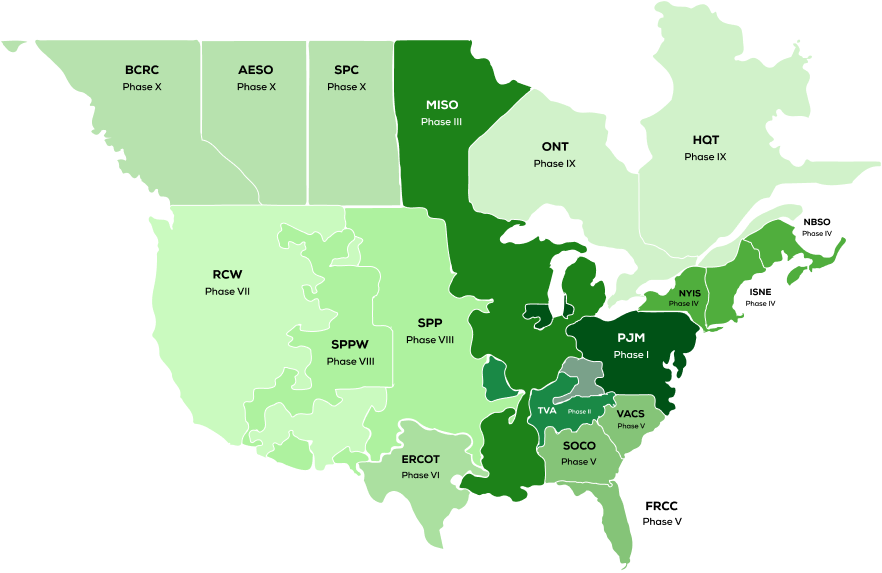In a severe power outage, assured, secure, high-data-rate communication is essential to power restoration. In an extreme, multi-region Black Sky-class outage, the survival and safety of the communities in the outage area depends on it. Whatever and however long the service disruption, the Energy Sector Web is designed to keep the energy sector and its partners communicating to support both conventional and blackstart / next-start restoration and recovery, without relying on public communication networks to interconnect key stakeholders. Now deployed across multiple states in the US Eastern Interconnection, the inaugural phase of the Energy Sector Web™ is now complete.
What is the Energy Sector Web?
The Energy Sector Web is a power industry initiative supported by EIS Council and its industry partners. The project, is deployed and demonstrated across three states in the Eastern Interconnection, and other companies can now join to expand the network. The Energy Sector Web is planned to grow to become a national-scale, EMP hardened survivable network, interconnecting energy companies with minimal new investment, using dark fiber assets and related, deployed technologies owned and maintained by participating energy utilities.
The Energy Sector Web | A cost effective, all-hazard, survivable communication network for energy sector partners, leveraging an array of technologies, including EMP hardening, Dense Wave Division Multiplexing (DWDM), Virtual Routing Forwarding (VRF) and mesh topology.
What information can be exchanged on the Energy Sector Web?
The Energy Sector Web is built using the same technology as the Internet, supporting the same information exchange capabilities: voice, video, email, applications and data.
Using fiber optic and related technologies, The Energy Sector Web is lightning fast. And with highly secure multiplexing technology, it can support both Information Technology (IT) and Operational Technology (OT), including Supervisory Control and Data Acquisition (SCADA) and Phasor data.
Why do we need the Energy Sector Web?
Energy powers our world, our economy, and our critical infrastructure. When power generation, transmission or distribution systems are disrupted, our modern world is disrupted. Without the robust communications needed to support timely restoration, such disruption could quickly become unrecoverable, with catastrophic consequences.
The energy sector is highly interdependent, both vertically and horizontally, relying upon robust telecommunications to synchronize effort within and across companies and sectors to ensure timely energy delivery, and when disrupted, timely restoration.
Yet restoration from a major power outage typically must take place at a time when the outage has also caused failures in national telecommunications assets, delaying the restoration, and resulting in a “positive feedback loop” between the energy and telecommunications sectors, prolonging the disaster. In an extreme, Black Sky-class multi-region outage, due to the increased restoration timeline and the resulting cascading breakdown of other infrastructure sectors, these delays could make restoration impossible.
The Energy Sector Web is designed to break this positive feedback loop by providing an alternative, independent, low cost, highly survivable, and highly-secure telecommunications network owned and operated exclusively by the energy sector.
Is the Energy Sector Web secure?
The Energy Sector Web is structured as an independent, fiber-optic based network operating independently of both OT (Operational Technology) and IT (Information Technology) networks within each participating company, minimizing cyber-security risk, Firewalls, Access Control Lists (ACL) and other technologies are programmed and managed by each participating company, ensuring that only necessary and approved information is passed into or received from the The Energy Sector Web network. Nodes are controlled by the utilities, and transmission remains solely within their property jurisdiction.
The Energy Sector Web is managed by an Energy Sector Web Governing and Security board, now in formation, that ensures Energy Sector Web operates to the benefit of all partners while maintaining best practices for cyber, EMP and physical security.

Why is the Energy Sector Web
more resilient and survivable
than other networks?
The Energy Sector Web network has been designed from its origins as an all-hazard, robust emergency communication system, with resilience and survivability as a fundamental purpose and priority.
As it evolves, all connections will be Electromagnetic Pulse (EMP) hardened, ensuring they will survive against any human-caused and naturally occurring electromagnetic disturbance.
The Energy Sector Web network is designed to support blackstart operations, by functioning for long durations without requiring grid power. Periodic fiber repeater installations will evolve to include provisions for long duration (e.g. 60 days+) off-grid power, to ensure the system’s utility during a long duration blackstart process, or a related disruption.
The Energy Sector Web relies on advanced routing and switching protocols, such as mesh-technology, to enable it to automatically route around failure points in the network. As the network grows, including new partners, its survivability will increase exponentially due to the increasing number of alternate paths.
The Energy Sector Web is designed to be compatible with the BSX bNet radio system to provide EMP hardened, long-range wireless connectivity, both fixed site and mobile, and to connect 4G or 5G LTE enterprise cellular networks or other mobile phone systems. The BSX bNet can also be deployed to create a wireless bridge in the event a critical path fails.
WHO CAN CONNECT TO THE ENERGY SECTOR WEB?
The Energy Sector Web network is open to all energy sector companies and partners, subject to approval by the Energy Sector Governing and Security board.
Contact usWHERE ARE WE TODAY?
The Energy Sector Web began as an EIS Council-hosted emergency communication initiative in support of the electric subsector. Initially the network interconnected three electric corporations: Dominion Energy, Exelon, and PJM Interconnection.
TODAY’S ENERGY SECTOR WEB
Today’s Energy Sector Web covers more than three states, including the District of Columbia, connecting the control centers of Dominion Energy (Richmond, VA), Exelon (Baltimore, MD) and PJM (Valley Forge, PA).

TOMORROW’S ENERGY SECTOR WEB
With the first three companies connected, Energy Sector Web is looking to expand to other interested companies,
with a focus on building out by Reliability Coordinator and member companies.

